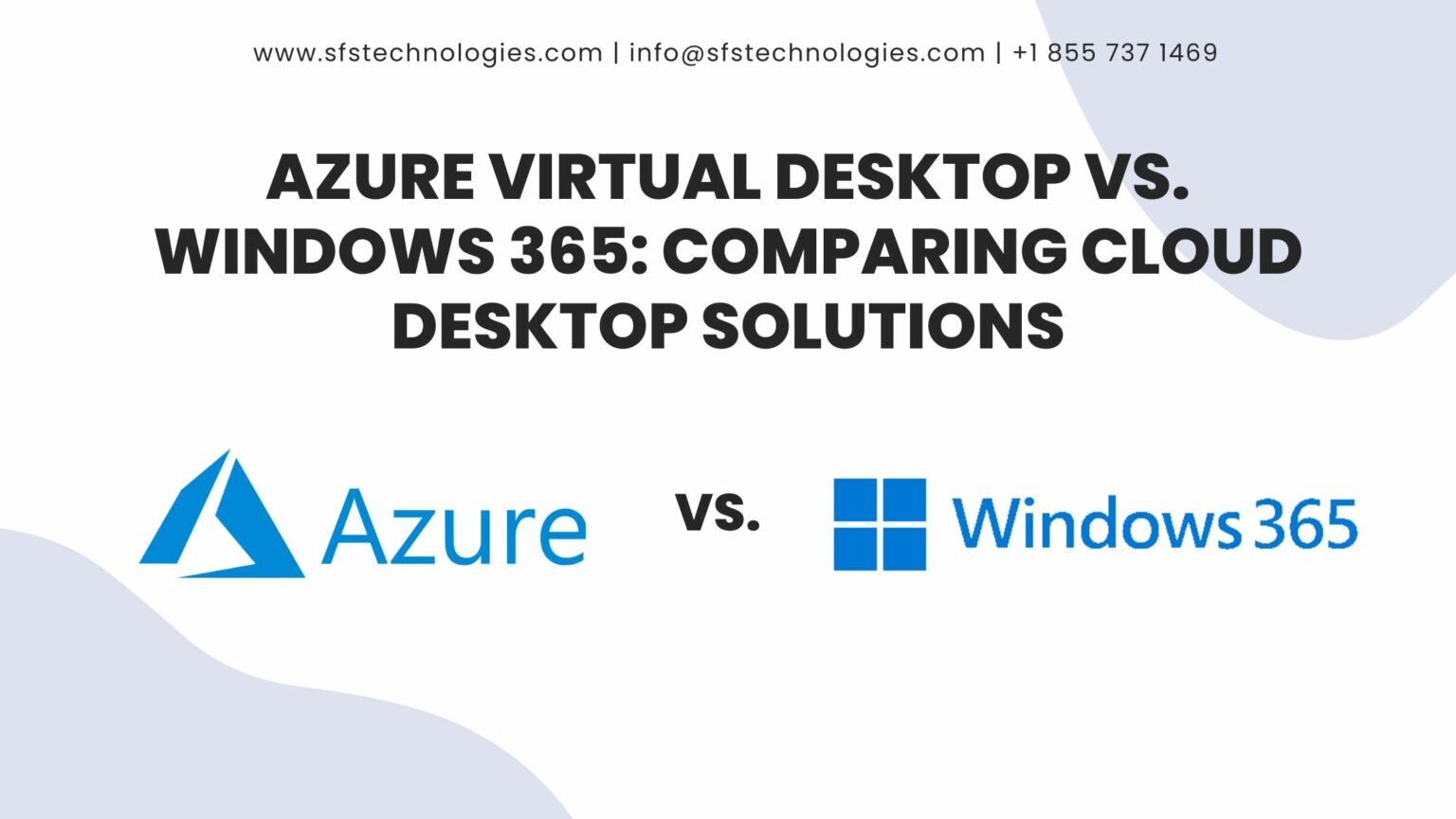
Are you looking for Cloud-based virtual desktop solutions? This comprehensive blog post will dive into Azure Virtual Desktop vs. Windows 365 comparison details. We will compare their features, use cases, management capabilities, and integration possibilities.
Cloud-based virtual desktop solutions have gained significant popularity in recent years, providing organizations with flexible and scalable options to deliver desktops and applications to their users. Azure Virtual Desktop (AVD) and Windows 365 are prominent players.
Azure Virtual Desktop, formerly known as Windows Virtual Desktop (WVD), is a cloud-based desktop and application virtualization service offered by Microsoft Azure.
It enables businesses to provide virtual desktops and applications to users on any device, from anywhere, leveraging the power and security of the Azure cloud infrastructure.
Architecture and Infrastructure
AVD adopts a session-based desktop model, where multiple users can connect to a single virtual machine (VM) concurrently.
This shared infrastructure approach optimizes resource utilization, leading to organization cost savings. Additionally, AVD supports dedicated virtual machines for users with specific requirements, ensuring optimal performance and customization possibilities.
AVD provides robust management capabilities through the Azure portal and PowerShell cmdlets. IT administrators can quickly provision and manage virtual machines.
They can also assign user access and configure policies to control user sessions and applications. The integration with Azure Active Directory enhances security by simplifying user authentication and access control.
One of the strengths of AVD lies in its flexibility and customization options. It supports persistent and non-persistent desktops, allowing users to retain personalized settings or start fresh with each session.
This flexibility caters to different use cases, such as scenarios where users must have their settings and applications available across multiple sessions or topics requiring a clean and standardized environment for each session.
AVD also offers compatibility with various operating systems, including Windows 10 multi-session, Windows 7, and Windows Server.
AVD integrates seamlessly with other Azure services, providing organizations with a comprehensive solution. Integration with Azure Backup allows for efficient data protection and disaster recovery, ensuring business continuity.
Azure Monitor enables proactive monitoring and management of the virtual desktop environment, while Azure Security Center enhances the overall security posture by providing advanced threat protection and compliance capabilities.
Windows 365 is a cloud PC service developed by Microsoft, delivering a personalized Windows desktop experience accessible from any device with an internet connection.
It simplifies the deployment and management of virtual desktops, making it an attractive option for organizations seeking a user-friendly and streamlined solution.
Windows 365 follows a Desktop as a Service (DaaS) model, where each user has an individual virtual machine dedicated to them. This approach ensures optimal performance and allows users to customize their desktop environment according to their preferences and requirements.
The dedicated VMs in Windows 365 provide users with consistent and personalized experiences.
Windows 365 simplifies management tasks by handling infrastructure provisioning and maintenance in the background. IT administrators can easily manage user assignments, policies, and updates through the Microsoft 365 admin center.
This streamlined approach reduces administrative burden and enables quick setup and configuration, allowing organizations to focus on delivering an exceptional user experience.
With Windows 365, users can access their personalized Windows desktops from various devices, including Windows, Mac, Android, and iOS. This device-agnostic approach enables seamless transitions between devices while maintaining a consistent experience.
Users can start their work on a desktop computer, continue on a tablet, and finish on a smartphone, ensuring productivity and flexibility regardless of their chosen device.
Windows 365 tightly integrates with Microsoft 365 services, providing a unified experience across productivity tools like Microsoft Teams, OneDrive, and Outlook.
Users can access their files, applications, and collaboration tools directly from their virtual desktops, eliminating the need to switch between different platforms. This integration enhances productivity and collaboration within the familiar Microsoft ecosystem.
The choice between Azure Virtual Desktop and Windows 365 depends on several factors, including organizational requirements, use cases, and priorities. Consider the following aspects when making a decision:
Azure Virtual Desktop and Windows 365 offer robust cloud-based desktop solutions, each with strengths and capabilities.
Azure Virtual Desktop provides flexibility, scalability, and integration with other Azure services, making it an excellent choice for organizations seeking a highly customizable and extensible solution.
On the other hand, Windows 365 simplifies the management process. It offers a streamlined user experience, particularly suitable for organizations looking for an easy-to-use solution tightly integrated with Microsoft 365 services.
Ultimately, the decision between Azure Virtual Desktop and Windows 365 depends on your organization’s specific needs and priorities. Assess your requirements, evaluate the features and capabilities of each solution, and consider factors such as scalability, customization, management, and integration to make an informed choice.
By leveraging the power of cloud desktop solutions, you can empower your workforce with enhanced flexibility, security, and productivity.
If you want to learn more about Azure Virtual Desktop, contact our Sales team at +1 855 737 1469 or email [email protected].
Reach out to us today to talk about how we can turn your software vision into a reality.